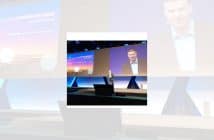ESB, Intune Networks AND TSSG (Waterford Institute of Technology) team up to develop smart energy systems
ESB Networks, in partnership with Intune Networks and TSSG (WIT), have secured €3.3m in EU funding under the FINESCE smart energy project to explore how future internet technologies can be applied to advance smart energy systems. The funding was awarded following a competitive process with other EU states, and the Irish partners were selected on the basis of the potential savings their projects could deliver to consumers across the European Union.
The funding for two Irish field trials was announced today, 26 July 2013 by the Minister for Communications, Energy and Natural Resources, Pat Rabbitte, TD.
The Irish trials are among seven field trials taking place across Europe under the FINESCE project. Within the Irish trials, Irish partners ESB, Intune Networks and TSSG (WIT) will team up with European partners Ericsson, Alcatel Lucent, Orange Labs, Alstom and the RWTH research centre to test the application of advanced internet technologies and architectures to support smart grid requirements in two main areas:
- The first will look at how dynamic control of electric vehicle charging can be used to balance the electricity system.
- The second will explore how utilities can use advanced optical burst telecommunications switching technology to enhance the functionality and efficiency of their networks.
Commenting on the project, the Minister for Communications, Energy and Natural Resources, Pat Rabbitte TD said, “This project highlights Ireland’s leadership in the area of smart networks and demonstrates the potential for Irish innovations to be used to deliver savings and achieve sustainability targets across Europe. It also shows how through collaboration between academia and industry, we can attract funding to Ireland to create high value research posts and develop future commercial opportunities.
“The Irish trials will use the state-of-the-art technology provided by the Exemplar network, demonstrating the importance of this network as a test bed to advance telecoms research in Ireland.” He said.
Pat O’Doherty, Chief Executive of ESB said, “As future internet technologies emerge, there are opportunities to create far smarter and more efficient energy systems. Through this project, we are combining ESB’s expertise in electricity and telecommunications with the latest internet innovations to develop sustainable and cost efficient solutions that will benefit all European citizens and the environment.’
Using new technology from Intune Networks and ESB’s advanced fibre optic telecommunications network, the partners will create an electricity network where all sub-stations are connected to one another at the speed of light. This will overcome the data bottlenecks associated with traditional networks, allowing critical time-sensitive electricity network control information to be delivered alongside vast quantities of data from other applications, such as smart-metering.
“Smart Electricity Grids are a critical element of Europe’s Energy 2020 policy and a valuable export opportunity. Intune’s new distributed networking innovations solve some of these key challenges and this important trial will pave the way towards meeting Regional and European Energy policies.” said John Dunne, Intune’s co-founder and Chief Technology Officer.
Miguel Ponce de Leon TSSG (WIT) Chief Technologist said, “Through the extensive collaborations afforded by FINESCE with domestic and European energy partners, the TSSG (WIT) will further its know-how to develop a management platform for the optimized charging of electric vehicle at home. The TSSG (WIT) is developing an energy management system based on future internet technologies that will monitor energy usage in a network, and suggest efficiencies. The solution will provide grid operators with the real-time ability to stabilize the grid supply by controlling the demand, thus becoming a critical tool for the future smart grid.”



